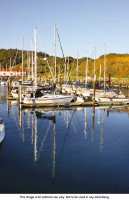Learn to Anchor a Boat Properly

Posted by peter88
from the Boating category at
12 Jul 2011 01:26:09 pm.

Setting an anchor is more than dropping the anchor and hoping for the best. There are tips that translate to good seamanship that also prevent risk of dragging an anchor or losing a boat in the current.
The first step to properly anchoring a boat is ensuring the right equipment is in place. Choosing an anchor requires a little forethought. Different types of anchors should be prepared for all the situations a boater may encounter. The size and weight of the anchor will be influenced by a number of conditions:
* the type of boat
* size of the vessel
* bottom surface where you intend to anchor
* wind and wave conditions
* available anchor equipment on the boat
Generally, the larger the anchor the more powerful the staying ability, especially if one has to ride out a storm at anchor. If a vessel can only accommodate one anchor, it's best to choose the largest one that will fit in an anchor locker or can be stored safely out of the way.
To help increase holding power of the anchor, leave several feet of chain or warp between the anchor and the anchor line. Experts recommend it be at least the length of the boat.
One of the common mistakes new skippers make is putting out too little scope when anchoring. Scope is the amount of anchor line put out when the boat is safely anchored. The scope should equal 5 to 7 times the depth of the water at high tide, plus the height of the water line to the bow of the boat.
When lowering the anchor, consider the direction of the wind, other vessels in the vicinity and the waves. Practice makes perfect when learning to properly anchor in different types of conditions. It is important to lay out the anchor chain by paying it out hand over hand so that it will eventually be laying out straight, as opposed to being in a big pile. Once the anchor has reached the seabed, a little reverse motion can help it hold and dig in. If the anchor has taken hold correctly, the vessel will come to an abrupt halt.
Even after an anchor has set, wave surge can cause the warp to flex like a yo-yo and sway the boat. An anchor weight added to the anchor tackle can help prevent drag, especially if the vessel will be unattended or left at anchor during rough weather. Learning to anchor securely and safely will take time, but eventually boaters can learn the basics and master a technique that works.
0 Comments



